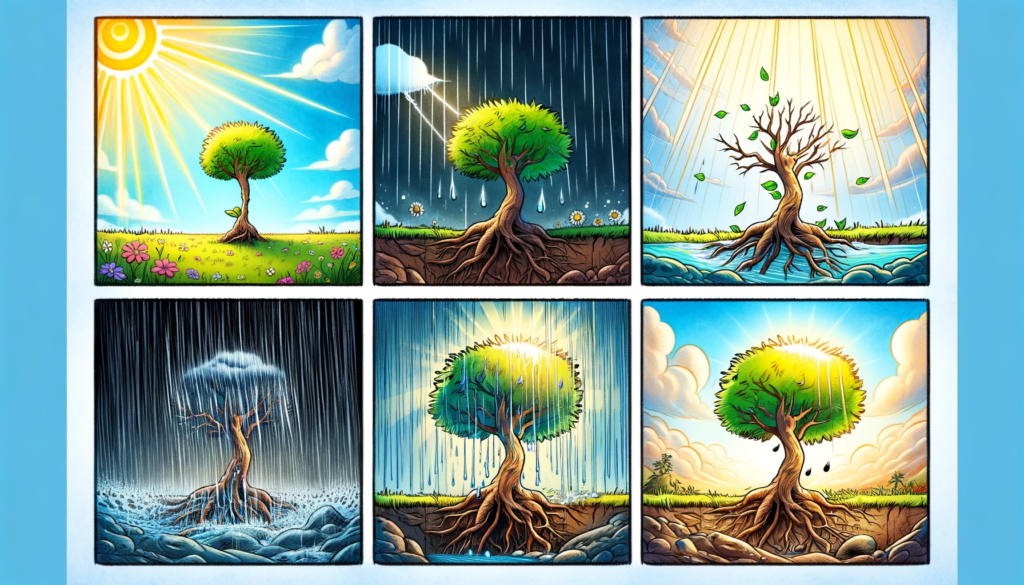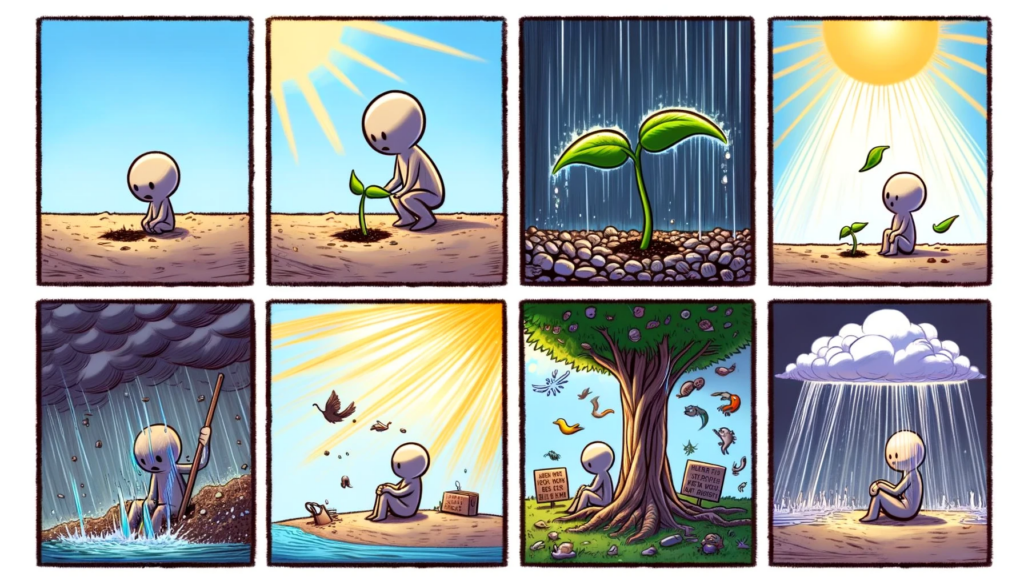
In the heart of nature’s grandeur, trees stand as silent witnesses to the passage of time, embodying strength, resilience, and an unparalleled balance between the elements. They teach us a profound lesson on stability and growth, drawing nourishment from both the light of the sun and the rain from the clouds. This delicate equilibrium between light and rain offers a powerful metaphor for life, reminding us of the importance of finding balance in our own lives.
The Essence of Balance
Trees thrive by anchoring deep into the earth while reaching upwards towards the light, a testament to their inherent wisdom in embracing both the sun’s warmth and the rain’s nourishment. This natural harmony is a guiding principle for us, illustrating that growth and stability are not products of singular conditions but the result of embracing a spectrum of experiences.
Embracing Light and Rain
Life, much like the environment of a tree, is a blend of light and rain—moments of joy and periods of challenge. The light in our lives can be seen in our achievements, joys, and the warmth of relationships. Rain, conversely, may represent the struggles, sorrows, and trials we face. Just as trees use both to grow, we too can learn to embrace the full range of our experiences, understanding that each has its role to play in our development.
Anchor Deep, Reach High
The roots of a tree offer a silent lesson in resilience. They anchor deep into the soil, providing stability and nourishment, allowing the tree to withstand even the fiercest storms. This anchoring is akin to our values, beliefs, and inner strength, which ground us in life’s turbulent times. Meanwhile, the branches reaching towards the sky symbolize our aspirations, dreams, and the continuous pursuit of growth. It’s a reminder to stay grounded in our principles while aspiring for our highest potential.
A Tale of Growth and Resilience
Consider the ancient oak in a sprawling forest, weathering countless storms and basking in the sunlight across centuries. Its existence is a parable of endurance, drawing strength from both the light that fuels its growth and the rain that tests its resolve. Its towering presence teaches us the beauty of resilience, the importance of a strong foundation, and the courage to reach for the light, even when enveloped by clouds.
Integrating the Balance
Incorporating this balance into our lives means acknowledging that our growth often comes from the interplay of varied experiences. It involves recognizing that adversity is as much a part of our development as success and happiness. By anchoring ourselves in a strong sense of self and reaching out to embrace the lessons each moment brings, we can find a harmonious balance that fosters true growth and fulfillment.
Conclusion
The tree, in its majestic simplicity, offers a profound lesson on living. To anchor like a tree is to recognize the essential balance between the light and rain in our lives, understanding that both are necessary for growth. As we navigate the complexities of existence, let us strive to embody the wisdom of the tree—rooted in strength, reaching towards the light, and growing in every season of life.









